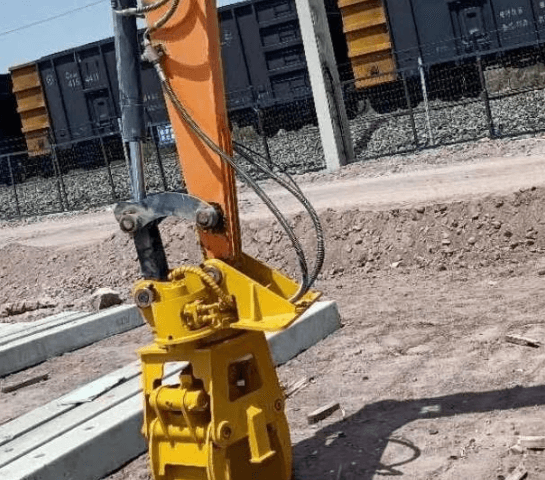
The advancement of PESCO Vehicle Dismantler Machine
2024-01-17
Introduction to Hydraulic Wood Grabbers Made by PESCO
2024-01-19Railway sleeper changing is a critical task for railway maintenance, as it ensures the stability and safety of the railway track. Traditionally, it is a labor-intensive work that requires a team of workers to manually remove old sleepers and install new ones. The process is not only time-consuming but also poses risks of injury to the workers. However, with the development of modern technology, a new solution – Sleeper Changing Machine, has been developed to tackle these challenges in railway maintenance.
PESCO Hydraulic Device, a modernized manufacturing enterprise, is fully committed to research and development, production, and sales of all kinds of excavator attachment equipment. PESCO Sleeper Changer Machine is one of their significant products, which uses a small excavator-modified sleeper machine to automate the process of sleeper changing.
Compared to the traditional manual method, PESCO Sleeper Changer Machine provides a host of benefits, mainly in terms of work efficiency and safety. Firstly, the machine works with an excavator, which greatly saves the workforce and work costs. PESCO Sleeper Changer Machine can completely work with more than 20 workers at the same time, and the efficiency is increased by more than 10 times. Within the same amount of time, a team of workers can only change a limited number of sleepers, while the machine can change many more, which saves costs and increases work efficiency.
Secondly, the PESCO Sleeper Changer Machine is designed with safety measures that reduce the risks of injury to workers. During manual sleeper changing, workers have to work in an awkward posture, exerting a lot of stress on their bodies, and increasing the risks of back pain, muscle strains, and other injuries. The machine eliminates this risk by doing most of the heavy lifting and moving of sleepers, leaving the workers to only do the final adjustments, which significantly reduces the risk of injuries.
In conclusion, PESCO Sleeper Changer Machine is a game-changer in the railway maintenance industry. It provides not only significantly improved work efficiency but also eliminates the risks of injury to workers, making sleeper changing a safer and more efficient task. It is undoubtedly a necessary tool for modern railway maintenance.




